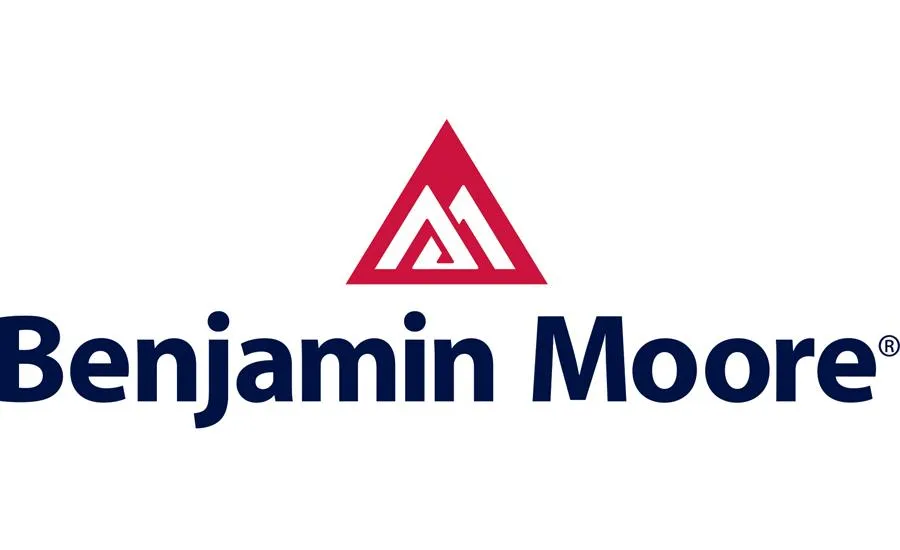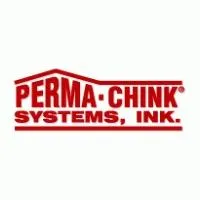Our Services
Log Cabin Restoration
Overview:
Log cabin restoration involves bringing aged or weathered logs back to life, ensuring their structural integrity and aesthetic beauty while protecting against further deterioration.
Process:
Inspection: Assess the logs for damage, rot, insect infestation, or weathering.
Sandblasting: Remove old stain, paint, and debris, exposing the fresh wood beneath.
Log Repair: Replace or repair damaged logs using precision techniques to match the existing structure.
Wood Filling and Chinking: Fill gaps and cracks with durable materials to seal and insulate the cabin, ensuring energy efficiency.
Staining and Sealing: Apply a premium stain to enhance the wood’s natural grain, followed by a protective sealant to guard against UV rays, moisture, and fungal growth.
Why It’s Needed:
If your log cabin shows signs of fading, rot, or cracked chinking, restoration not only improves its appearance but also extends its lifespan, preventing costly repairs in the future.
Exterior Staining
Overview:
Exterior staining is the process of applying a durable stain to wood surfaces to enhance their appearance and protect them from the elements.
Process:
Surface Preparation: Clean surfaces thoroughly to remove dirt, mildew, and old finishes. This may include power washing and palm sanding, chemical stripping, and media blasting.
Repairs: Fix cracks, splits, or damaged wood before staining.
Stain Application: Use high-quality stains tailored to the type of wood and environmental exposure. Stains are applied evenly using brushes or sprayers.
Sealing: For added protection, a topcoat sealant may be applied, especially for areas exposed to extreme weather.
Why It’s Needed:
Wood exposed to Ontario’s harsh winters and UV rays can fade, crack, or warp. Regular staining rejuvenates the wood’s natural beauty and provides essential protection against these elements.
Deck Staining
Overview:
Deck staining focuses on restoring and protecting outdoor decks from wear and weather damage while enhancing their natural wood appeal.
Process:
Cleaning and Stripping: Remove dirt, moss, and old finishes using power washing and safe chemical strippers if necessary.
Sanding: Smooth the surface to remove splinters and ensure even stain application.
Stain Selection: Choose from transparent, semi-transparent, or solid stains based on the deck’s material and desired look.
Application: Apply the stain using rollers, brushes, or sprayers to ensure consistent coverage.
Sealing: A protective topcoat can be applied for high-traffic decks to ensure maximum durability.
Why It’s Needed:
Decks are exposed to heavy foot traffic, snow, and UV rays, which can lead to fading, splintering, and cracking. Staining not only revives the appearance but also protects against wear and water damage.
Timber Frame Restoration
Overview:
Timber frame restoration ensures the structural soundness and visual appeal of exposed wood beams and structures, preserving them against decay and weathering.
Process:
Assessment: Inspect beams for cracks, rot, insect damage, or weathering.
Cleaning: Remove surface dirt, mildew, and old finishes through gentle power washing or sanding.
Repairs: Fill cracks, replace damaged sections, and reinforce weak areas with appropriate materials.
Finishing: Apply stains or oils to bring out the timber’s natural beauty, followed by a protective coating to prevent future damage.
Why It’s Needed:
Timber frames are a key architectural feature but are prone to cracking, UV damage, and rot over time. Restoration not only maintains their structural integrity but also preserves their aesthetic value.
Log Rot Remediation
Overview:
Log rot remediation is the process of repairing and replacing logs affected by rot to restore the structural and visual integrity of a log cabin or timber structure.
Process:
Inspection: Identify areas of rot and determine the extent of damage.
Removal: Excavate the rotted sections, ensuring no compromised wood remains.
Replacement or Repair: Insert new logs or repair sections using epoxy fillers and other durable materials.
Staining and Sealing: Apply protective stains and sealants to prevent future rot and moisture penetration.
Why It’s Needed:
Log rot compromises the safety and longevity of a structure. Timely remediation prevents further damage and preserves your investment.
Cedar Shake Restoration
Overview:
Cedar shake restoration involves cleaning, repairing, and refinishing cedar roofs or siding to restore their natural beauty and ensure long-lasting protection.
Process:
Cleaning: Remove dirt, moss, and algae using specialized cleaners and low-pressure washing.
Repairs: Replace cracked or missing shakes and fix underlying issues.
Staining or Oiling: Apply a UV-resistant stain or oil to rejuvenate the wood’s colour and protect it from moisture and sun damage.
Sealing: Use water-repellent sealers to prevent rot and extend the life of the shakes.
Why It’s Needed:
Cedar shakes are durable but require regular maintenance to protect against weathering, moss growth, and UV damage. Restoration enhances their appearance and prolongs their lifespan.
Our Services
Log Cabin Restoration
Overview:
Log cabin restoration involves bringing aged or weathered logs back to life, ensuring their structural integrity and aesthetic beauty while protecting against further deterioration.
Process:
Inspection: Assess the logs for damage, rot, insect infestation, or weathering.
Sandblasting: Remove old stain, paint, and debris, exposing the fresh wood beneath.
Log Repair: Replace or repair damaged logs using precision techniques to match the existing structure.
Wood Filling and Chinking: Fill gaps and cracks with durable materials to seal and insulate the cabin, ensuring energy efficiency.
Staining and Sealing: Apply a premium stain to enhance the wood’s natural grain, followed by a protective sealant to guard against UV rays, moisture, and fungal growth.
Why It’s Needed:
If your log cabin shows signs of fading, rot, or cracked chinking, restoration not only improves its appearance but also extends its lifespan, preventing costly repairs in the future.
Exterior Staining
Overview:
Exterior staining is the process of applying a durable stain to wood surfaces to enhance their appearance and protect them from the elements.
Process:
Surface Preparation: Clean surfaces thoroughly to remove dirt, mildew, and old finishes. This may include power washing and palm sanding, chemical stripping, and media blasting.
Repairs: Fix cracks, splits, or damaged wood before staining.
Stain Application: Use high-quality stains tailored to the type of wood and environmental exposure. Stains are applied evenly using brushes or sprayers.
Sealing: For added protection, a topcoat sealant may be applied, especially for areas exposed to extreme weather.
Why It’s Needed:
Wood exposed to Ontario’s harsh winters and UV rays can fade, crack, or warp. Regular staining rejuvenates the wood’s natural beauty and provides essential protection against these elements.
Deck Staining
Overview:
Deck staining focuses on restoring and protecting outdoor decks from wear and weather damage while enhancing their natural wood appeal.
Process:
Cleaning and Stripping: Remove dirt, moss, and old finishes using power washing and safe chemical strippers if necessary.
Sanding: Smooth the surface to remove splinters and ensure even stain application.
Stain Selection: Choose from transparent, semi-transparent, or solid stains based on the deck’s material and desired look.
Application: Apply the stain using rollers, brushes, or sprayers to ensure consistent coverage.
Sealing: A protective topcoat can be applied for high-traffic decks to ensure maximum durability.
Why It’s Needed:
Decks are exposed to heavy foot traffic, snow, and UV rays, which can lead to fading, splintering, and cracking. Staining not only revives the appearance but also protects against wear and water damage.
Timber Frame Restoration
Overview:
Timber frame restoration ensures the structural soundness and visual appeal of exposed wood beams and structures, preserving them against decay and weathering.
Process:
Assessment: Inspect beams for cracks, rot, insect damage, or weathering.
Cleaning: Remove surface dirt, mildew, and old finishes through gentle power washing or sanding.
Repairs: Fill cracks, replace damaged sections, and reinforce weak areas with appropriate materials.
Finishing: Apply stains or oils to bring out the timber’s natural beauty, followed by a protective coating to prevent future damage.
Why It’s Needed:
Timber frames are a key architectural feature but are prone to cracking, UV damage, and rot over time. Restoration not only maintains their structural integrity but also preserves their aesthetic value.
Log Rot Remediation
Overview:
Log rot remediation is the process of repairing and replacing logs affected by rot to restore the structural and visual integrity of a log cabin or timber structure.
Process:
Inspection: Identify areas of rot and determine the extent of damage.
Removal: Excavate the rotted sections, ensuring no compromised wood remains.
Replacement or Repair: Insert new logs or repair sections using epoxy fillers and other durable materials.
Staining and Sealing: Apply protective stains and sealants to prevent future rot and moisture penetration.
Why It’s Needed:
Log rot compromises the safety and longevity of a structure. Timely remediation prevents further damage and preserves your investment.
Cedar Shake Restoration
Overview:
Cedar shake restoration involves cleaning, repairing, and refinishing cedar roofs or siding to restore their natural beauty and ensure long-lasting protection.
Process:
Cleaning: Remove dirt, moss, and algae using specialized cleaners and low-pressure washing.
Repairs: Replace cracked or missing shakes and fix underlying issues.
Staining or Oiling: Apply a UV-resistant stain or oil to rejuvenate the wood’s colour and protect it from moisture and sun damage.
Sealing: Use water-repellent sealers to prevent rot and extend the life of the shakes.
Why It’s Needed:
Cedar shakes are durable but require regular maintenance to protect against weathering, moss growth, and UV damage. Restoration enhances their appearance and prolongs their lifespan.
From Our Clients
Lorem ipsum dolor sit amet, consectetur adipiscing elit. Ut ultrices eget orci et aliquet. Praesent tincidunt sed nisl nec facilisis. Pellentesque ut eros dictum, posuere nibh at, blandit leo. Aenean lobortis arcu.
★★★★★
Norman
Residential
Lorem ipsum dolor sit amet, consectetur adipiscing elit. Ut ultrices eget orci et aliquet. Praesent tincidunt sed nisl nec facilisis. Pellentesque ut eros dictum, posuere nibh at, blandit leo. Aenean lobortis arcu.
★★★★★
Richard K.
Commercial
Lorem ipsum dolor sit amet, consectetur adipiscing elit. Ut ultrices eget orci et aliquet. Praesent tincidunt sed nisl nec facilisis. Pellentesque ut eros dictum, posuere nibh at, blandit leo. Aenean lobortis arcu.
★★★★★
Jon Faber
Emergency Service
Frequently Asked Questions
How do you prepare surfaces before staining or painting?
Proper surface preparation is crucial for a long-lasting finish. Our process includes cleaning the area to remove dirt and mildew, sanding to smooth rough spots, repairing any damaged sections, and applying appropriate primers or sealers to ensure optimal adhesion of the stain or paint.
How do I know if my wood needs restoration or maintenance?
Wood surfaces often show signs of needing care, such as fading, discoloration, cracking, or visible damage like rot or peeling finishes. If your log cabin, deck, or cedar shakes look weathered or no longer repel water, it’s time for professional attention. Regular maintenance not only restores beauty but also prevents costly repairs down the road. Contact us for an assessment to determine what your property needs!
How often should I re-stain or repaint my exterior surfaces?
The frequency of maintenance depends on factors like exposure to elements, type of wood, and quality of previous applications. Generally, we recommend re-staining every 3-5 years and repainting every 5-7 years to maintain optimal protection and appearance. Regular inspections can help identify when it's time for a refresh.
Office
Sturg Works Co.
(807) 808-3492
info@sturgworksco.com
Follow Us
Legal
© Sturg Works Co. 2025
All Rights Reserved





